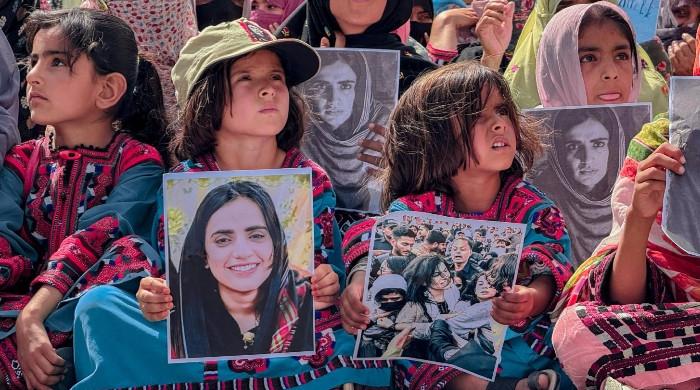Visible and invisible subsidies
Market fundamentalists support the idea of a brutal austerity programme, urging govtd to slash social welfare budgets to strike a fiscal balance
August 06, 2024

Subsidies, especially those extended to poor people in Western and developed states, have always been resented by free market advocates who argue they amount to encouraging people to be sluggish, lazy and parasitical. They hate the very idea of extending help and succour to people from the bottom layer of social stratification.
Market fundamentalists, therefore, fiercely support the idea of a brutal austerity programme, urging the governments to slash social welfare budgets to strike a fiscal balance. It is perhaps the influence of these followers of laissez-faire that forced many countries, known for their social welfare projects, to cut down on such spending, which spells a disaster for people in several Western states, leading to the rise of far-right demagogues.
While subsidies given to the people in the form of benefits or social welfare are much talked about, other invisible forms of favours go unnoticed or largely ignored by the mainstream corporate media.
Anti-austerity critics point out the hypocrisy of free market thinkers who do not want any government intervention and want to see a society where capitalists are fiercely competing with each other and letting the market decide their fate, but whenever a crisis hits a capitalist country, these advocates of unbridled capital want the government to inject money from the public taxes in a bid to clear the mess created by the anarchy of production and blind competition between capitalists.
Many advocates of capitalism — from liberal economic thinker John Maynard Keynes to free market fanatic Milton Friedman — wanted the hard-earned money of the people to be spent for the benefit of the capitalist economy, especially when it is on the verge of a financial or economic meltdown.
Keynes strongly supported lavish spending of public money on worthless infrastructure projects to stimulate the economy which might also benefit people in one or another way. At the same time, Friedman advocated limited state intervention to bolster the capitalist class in times of crisis.
It is interesting to note that free-market thinkers are quick to point out governments spending on social welfare programmes, accusing them of wasting precious resources but tend to ignore the invisible forms of subsidies extended to the super-rich or elites of various capitalist states.
For instance, former US president Barack Obama was lambasted for expanding the scope of medical insurance but very little is said about the $800 billion bailout package that he doled out to banks.
Trump’s government offered a substantial reduction in taxes to American businesses and manufacturers in a bid to persuade them to invest inside the US. But no objection was raised. These favours created immense fiscal imbalances that were naturally bridged by cutting down on social spending or burdening people with more taxes.
Similarly, the UK, a country that followed the ruthless free market philosophy of Fredrick Hayek during the time of Margaret Thatcher, doled out favours to banks and other economic entities. It was estimated in 2017 that some banks were doled out a hidden £23 billion-subsidies a year. This was in addition to the nationalisation of some banks, including Northern Rock.
According to the British parliament’s website, from September 2007 to December 2009, the government made several interventions to support the banking sector generally and several banks specifically.
“It injected £137 billion of public money in loans and capital to stabilise the financial system, most of which has been recouped over the years. In addition to cash support, the Treasury also provided financial guarantees to help restore confidence in the banks. Guarantees are promises to repay or compensate investors if they lose their money, so that if all goes well, guarantees don’t cost the government. The National Audit Office (NAO) estimates that total guarantees added up to over £1 trillion at peak support.” The champions of the free market turned a blind eye to the process of nationalising the losses and privatising the profits.
One might describe them as visible subsidies but there are other types of subsidies that might be called invisible. For instance, the US spent $16 trillion on defence, weapons and wars between 1945 and 2001. If we add up the $8 trillion that it spent on the Iraq and Afghanistan wars, then the total would be a whopping $24 trillion. Who benefited from this mammoth spending? The military-industrial complex, oil conglomerates, large banks, catering outlets, food businesses, electronic entities and several other vested interests. They were paid out from public money which should have been spent on improving infrastructure, free college education and supporting the low-income families.
France also doled out these clandestine subsidies. It carried out several military expeditions across Africa in a bid to prop up governments that turned a blind eye to its ruthless exploitation of uranium and other minerals in the most impoverished continent of the globe. Paris has been cutting down on social spending for years or dithering on allocating sufficient funding for people's welfare schemes. Who benefitted from these expeditions? The nuclear lobby and other vested interests.
India has also emerged as one of the biggest military spenders. The ruling elite in the largest democracy is less concerned about extending relief and succour to over 243 million poor officially (over 600 million unofficially depending upon the criteria used to measure poverty) and more about how to appease the corporate sector and vested interests.
Since the rise of Modi, the elite has been receiving a lot of favours. The Modi regime not only extended substantial relief in taxes last year to high-income individuals but it also intends to spend over $200 billion to modernise the military.
According to a report of the Committee for the Abolition of Illegitimate Debt, the top 10% of the Indian population now holds 77% of the total national wealth. “Between 2018 and 2022, India is estimated to have produced 70 new millionaires every day. Billionaires’ fortunes increased by almost 10 times over the last decade and their total wealth is higher than the entire national budget of India for the fiscal year 2018-19.”
The report goes on to add, “In contrast, 63 million Indians are pushed into poverty because of healthcare costs every year — almost two people every second. Indeed, it would take 941 years for a minimum wage worker in rural India to earn what the top paid executive at a leading Indian garment company earns in a year. While the country is a top destination for 'medical tourism', the poorest Indian states have infant mortality rates higher than those in sub-Saharan Africa. India accounts for 17% of global maternal deaths, and 21% of deaths among children below five years.”
Samyukta Kisan Morcha, an umbrella of farm unions, claims that over 100,000 farmers have committed suicide in the last ten years of Modi’s rule. Citing various global bodies, the CADTM reveals, “India ranks 111th of the 125 nations in the Global Hunger Index (2023) report. India is home to over a third of the world’s malnourished children, which is not only a health crisis but has a wider impact on the economy. A 2023 joint report by FAO, Unicef, WHO and WFP, found that 74% of the population cannot afford healthy food.”
Many critics believe that the issue of poverty in India, college debts in the US, improvement of the health system in the UK and reduction in social welfare funding in several middle- and high-income countries can be addressed if visible and invisible subsidies doled out to the rich are abolished.
The writer is a freelance journalist who can be reached at: [email protected]
Disclaimer: The viewpoints expressed in this piece are the writer's own and don't necessarily reflect Geo.tv's editorial policy.
Originally published in The News











